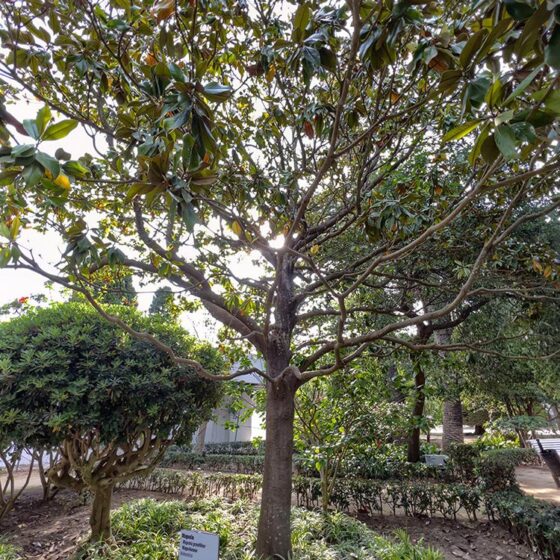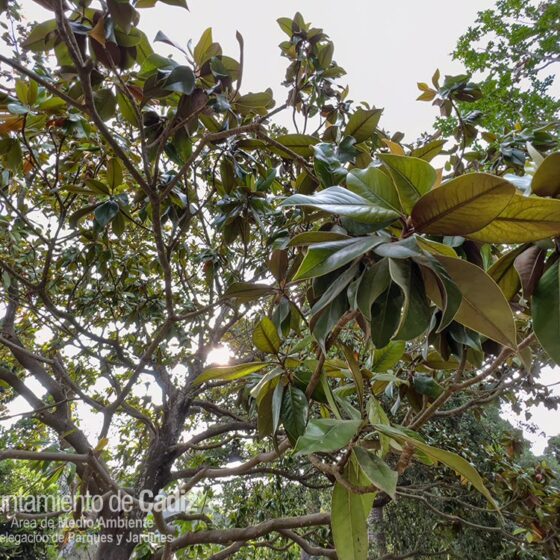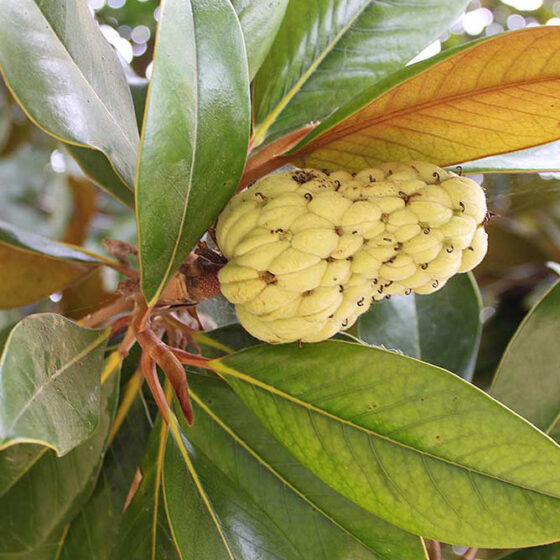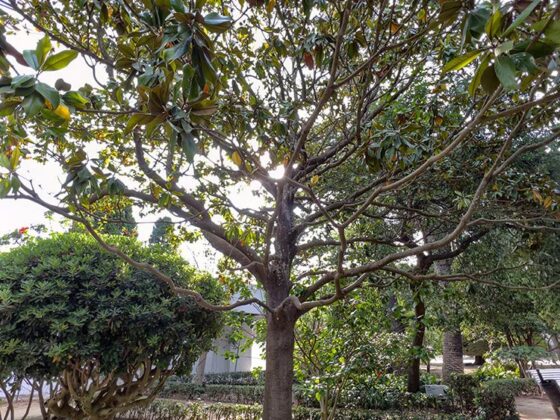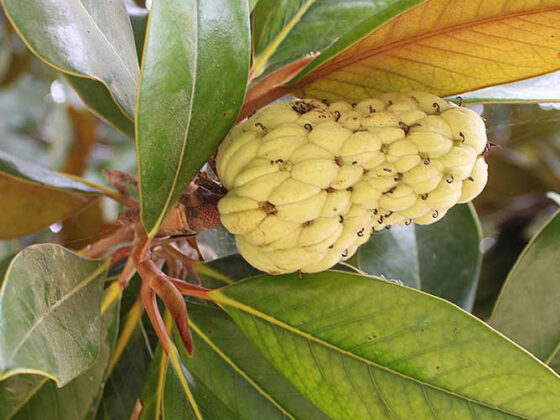Big-laurel / Bull-bay / Evergreen Magnolia / Southern Magnolia
Magnolia grandiflora
The genus Magnolia was described and named by Linnaeus in honour of Pierre Magnol (1638-1714), physician of King Louis XIV of France, professor of botany and director of the botanical garden in Montpellier, who established the modern concept of botanical family. The specific name grandiflora refers to the size of the flowers.
Natural in the southeast of the USA (from North Carolina to Central Florida and east of Texas), and was introduced in Europe at the first half of the 18th century.
Tree of 15-20 m in height. Short trunk, with dark grey fissured bark. Its leaves are large, perennial, alternate, arranged in terminal, elliptical or oblong-ovate bunches, sharp-pointed, coriaceous, bright green in the midrib and ferruginous-pubescent on the underside, with a wavy edge. Its very large flowers are perfumed, erect, solitary, and white. The stamens have a purple top part. The fruit is in the shape of an oval pineapple, measuring 10 cm long, and is covered with a fine brown pubescence. The seeds, which are flattened and red measure 1-1.3 cm long.
The wood is used in cabinetmaking, the seeds serve as food for wildlife (squirrels, quails and wild turkey). The tree is of great ornamental value, is cultivated in parks and walkways and requires rich and fresh soil. It needs ample space because it has a very developed root system and a wide crown, although its growth is slow.
In Cadiz, it is traditional to use flowers in the Exorcism of the Custody for the procession of the Corpus, which are collected from the specimens from the Old Military Hospital, Genovés Park, Plaza de España, Plaza de Mina, Plaza de Fragela and Plaza de Topete.


